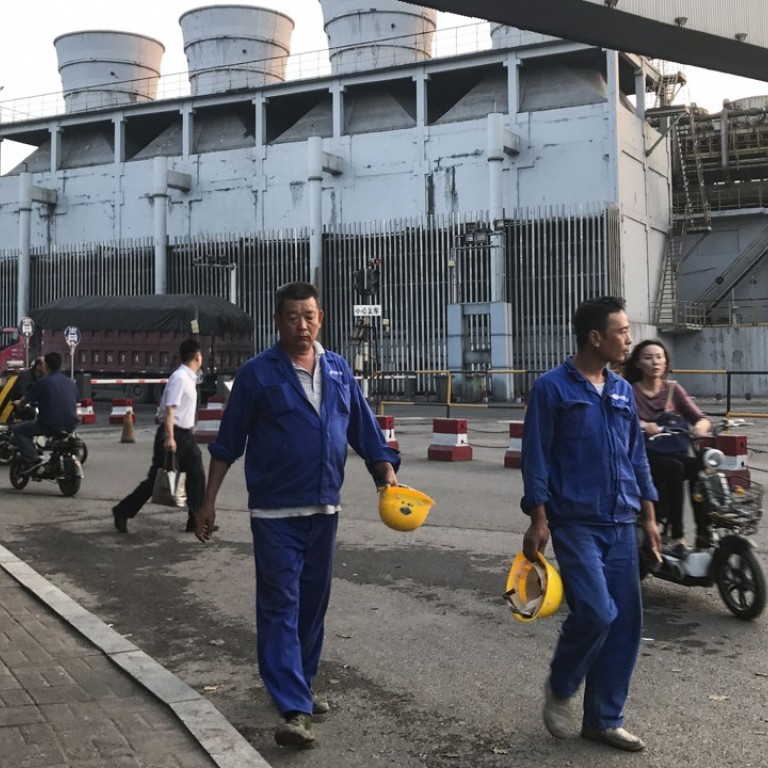
Softer factory inflation takes pressure off China’s central bank to tighten policy
Sustained moderation in producer price index gives policymakers a freer hand to focus on industrial overcapacity and pollution
China’s producer price index slid to the lowest level since November 2016 last month and consumer price growth remained largely stable, taking pressure off the People’s Bank of China to restrain inflation even as it raises market borrowing costs to curb debt growth.
The producer price index rose 4.9 per cent in December from a year earlier versus a projected 4.8 per cent rise in a Bloomberg survey and 5.8 per cent in November.
The consumer price index climbed 1.8 per cent, the statistics bureau said on Wednesday, compared with a median forecast of 1.9 per cent.
While a sustained moderation in factory inflation in China would put a question mark over the strength of global reflation, it also leaves domestic policymakers with a freer hand to conduct ongoing campaigns against industrial overcapacity and pollution.
“Price pressures remain contained in China, easing pressure on the PBOC to tighten policy,” said Frederic Neumann, co-head of Asian economics research at HSBC Holdings in Hong Kong. “Cooling PPI inflation reflects slowing construction activity, while at the consumer level pricing power continues to be constrained.”
Fielding Chen at Bloomberg Economics in Hong Kong expected factory inflation to slow further, “crimped by unfavourable base effects, continued overcapacity in some industrial sectors, and uncertainty about the outlook for commodity prices”. “Lower readings for the PPI, which translate to weaker industrial profits, could make the deleveraging process more painful,” Chen said.
Food prices posted the first decline since 2003 last year, falling 1.4 per cent. Full-year data showed producer prices rose 6.3 per cent and consumer inflation gained 1.6 per cent in 2017.
“I am not worried about the decline of headline PPI as it registered a strong sequential increase of 0.8 per cent on the month,” said Raymond Yeung, chief Greater China economist at Australia & New Zealand Banking Group in Hong Kong. “Our forecast is for it to rise by 4.8 per cent in 2018. Given the cold weather in the recent weeks, energy prices are supportive. We also believe the CPI will pick up in January. China’s inflation outlook will pick up gradually.”
Larry Hu, chief China economist at Macquarie Securities in Hong Kong, said there was “a lot of uncertainty shrouding the outlook for China’s CPI and PPI in 2018”.
“China’s economic growth, which is a main factor influencing PPI, is hard to predict as it will be influenced by how tough the deleveraging campaign is and how far the slowdown in the property market will go,” Hu said.
“The PBOC will be on wait-and-see mode at least in the first three months of 2018, as it needs to see more economic data before deciding whether to tighten or loosen monetary policy.”
Christopher Balding, an associate professor at the HSBC School of Business at Peking University in Shenzhen, said: “I don’t see where 2018 inflation is coming from.
“[Last year’s] came from commodities and those are relatively flat year-on-year compared to their 2017 levels. We should see continued declines in the PPI.”

